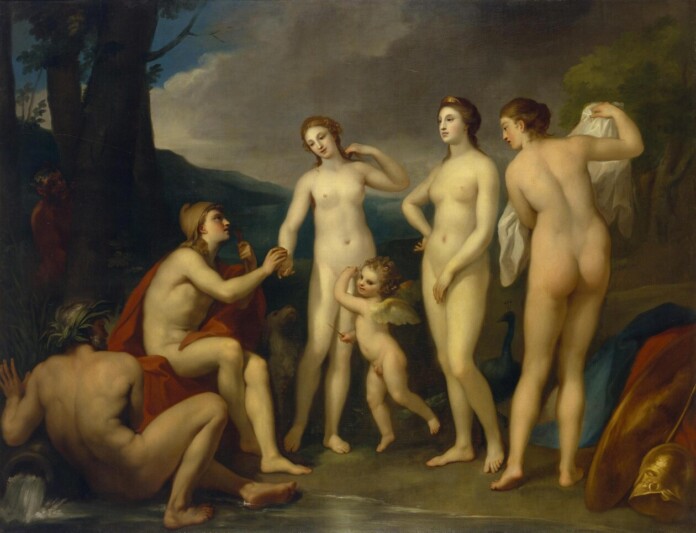Neoclassicism, a prominent artistic movement that emerged in the late 18th century, marked a significant departure from the flamboyant and ornate style of Rococo. Drawing inspiration from the art and culture of ancient Greece and Rome, Neoclassical artists sought to revive the ideals of simplicity, harmony, and rationality that characterized classical civilization. This revival was fueled by a renewed interest in classical literature, philosophy, and archaeology, as well as a growing sense of disillusionment with the excesses of the Ancien Régime.
Historical Context
The rise of Neoclassicism coincided with a period of profound social and political upheaval in Europe. The French Revolution, which began in 1789, challenged the traditional authority of the monarchy and aristocracy, and ushered in a new era of democratic ideals. Neoclassical art, with its emphasis on civic virtue, patriotism, and the importance of public service, resonated with the revolutionary spirit of the age.
Moreover, the rediscovery of ancient ruins, such as Pompeii and Herculaneum, provided artists with a wealth of inspiration and models. The excavation of these cities revealed a world of exquisite craftsmanship, sophisticated architecture, and a rich cultural heritage that had been lost for centuries. These discoveries sparked a fascination with classical antiquity and fueled a desire to emulate its artistic achievements.
Characteristics of Neoclassical Art
Neoclassical art was characterized by a number of distinctive features, including:
- Emphasis on form and line: Neoclassical artists were concerned with creating idealized forms that embodied the beauty and perfection of the human body. They often used linear perspective to create a sense of depth and space, and paid close attention to the contours and proportions of their subjects.
- Use of classical motifs: Neoclassical art frequently incorporated motifs and symbols drawn from classical mythology and history. These motifs, such as columns, arches, and figures from Greek and Roman legends, served to evoke a sense of timelessness and tradition.
- Emphasis on historical subjects: Neoclassical artists often turned to historical subjects for their inspiration. They depicted scenes from ancient history, mythology, and literature, often with a moral or political message.
- Focus on civic virtue and patriotism: Neoclassical art was often used to promote ideals of civic virtue and patriotism. Artists depicted scenes of heroism, self-sacrifice, and public service, often with the aim of inspiring viewers to emulate these noble qualities.
- Simple and restrained palette: Neoclassical artists generally used a simple and restrained palette of colors, often focusing on shades of white, black, and brown. This emphasis on monochrome helped to create a sense of seriousness and dignity.
Technological Advancements
Technological advancements played a significant role in the development of Neoclassical art. The invention of oil paints in the 15th century made it possible for artists to create more realistic and detailed paintings. The development of perspective in the 15th century also allowed artists to create more convincing and immersive compositions.
In addition, the discovery of archaeological sites such as Pompeii and Herculaneum in the 18th century provided a wealth of inspiration for Neoclassical artists. The excavation of these sites revealed the remains of ancient temples, statues, and other artifacts, giving artists a glimpse into the art and culture of classical antiquity.
Key Figures and Works
- Jacques-Louis David: One of the most influential Neoclassical artists, David’s work is characterized by its dramatic compositions, strong lines, and idealized figures. His most famous paintings include “The Oath of the Horatii” (1784), “The Death of Socrates” (1787), and “The Death of Marat” (1793).
- Antonio Canova: A leading sculptor of the Neoclassical era, Canova’s work is known for its graceful and idealized figures. His most famous sculptures include “Psyche Revived by Cupid’s Kiss” (1788) and “Venus Victrix” (1805-1808).
- Angelica Kauffmann: One of the few female artists to achieve prominence during this period, Kauffmann’s work often depicted scenes from classical mythology and history. Her paintings are known for their delicate brushwork and graceful figures.
- Thomas Jefferson: Although not primarily an artist, Jefferson was a passionate advocate for Neoclassical architecture. He designed Monticello, his plantation home in Virginia, in a Neoclassical style, incorporating elements such as columns, arches, and a dome.
Neoclassical Architecture
Neoclassical architecture was another important aspect of the movement. Buildings were designed with simple, symmetrical forms, often incorporating elements such as columns, arches, and domes. The Parthenon in Athens, a masterpiece of ancient Greek architecture, served as a major source of inspiration for Neoclassical architects.
Decline and Legacy
The influence of Neoclassicism began to wane in the early 19th century, as artists and architects turned to new styles, such as Romanticism and Realism. However, the movement’s legacy continues to be felt today. The ideals of simplicity, harmony, and rationality that were championed by Neoclassical artists and architects have had a lasting impact on Western culture and continue to inform our understanding of art and architecture.
Conclusion
Neoclassical art was a product of its time, reflecting the social, political, and cultural changes of the late 18th and early 19th centuries. By drawing inspiration from the art and culture of ancient Greece and Rome, Neoclassical artists sought to revive the ideals of simplicity, harmony, and rationality that characterized classical civilization. The movement’s influence can be seen in a wide range of artistic disciplines, from painting and sculpture to architecture and literature. While Neoclassicism may have declined in popularity over time, its legacy continues to be felt today, shaping our understanding of art and culture.
